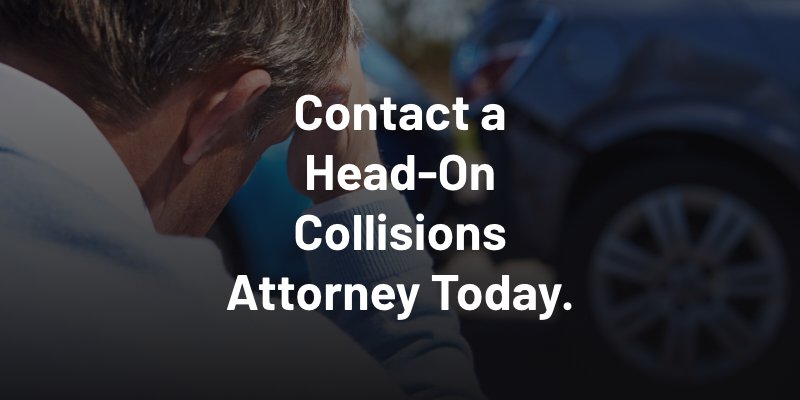Few words strike fear in the hearts of motorists like “head-on collision.” When two vehicles crash head to head, the crash force of the accident doubles. In other words, a head-on collision between two cars driving at 50 miles per hour is equal to a collision with a solid obstacle at 100 miles per hour.
Head-on collisions make up 29.6% of fatalities in two-vehicle car accidents, with over 5,800 deaths in 2022 alone. A skilled car accident attorney in Everett thoroughly investigates the incident and gathers evidence to meet the burden of proof, working to secure the maximum settlement for their injured clients.
What are the Most Common Causes of Head-on Collisions?
Head-on collisions occur when two vehicles approach each other while traveling in opposite directions and one vehicle either departs from its lane or enters a lane in the wrong direction. The most common causes of head-on collisions include:
- Distracted driving
- Speeding around curves
- Improper passing
- Entering a one-way street in the wrong direction
- Merging onto a divided highway in the wrong direction
- Drowsy driving
- Drunk driving
Slippery road conditions, poor roadway planning, lack of adequate signage, and mechanical failures cause some head-on collisions, but driver error, negligence, and reckless driving are the most common causes of head-on collision car accidents.
Injuries in Head-on Collision Car Accidents
In most types of crashes, such as rear-end collisions and T-bone accidents, the occupants of one vehicle face a greater risk of injuries than the other. In head-on collisions, motorists in both vehicles are equally at risk. The drivers and front-seat passengers face the greatest risk of serious, catastrophic, or fatal injuries such as the following:
- Traumatic brain injuries
- Neck injuries
- Back injuries
- Fractures, including of the limbs, ribs, hips, clavicle, and pelvis
- Facial and dental trauma
- Thoracic injuries, including Internal organ damage in the chest and abdomen
- Spinal cord injuries
- Soft-tissue injuries to the shoulders, knees, ankles, and wrists
- Lacerations, bruises, and abrasions
- Wrongful death
In head-on collisions, front-seat motorists face extreme risk of injuries even when their seatbelts and airbags function at their optimal best.

Liability in Head-on Collisions
Determining which driver is responsible for the accident and liable for damages like property damage, medical expenses, lost wages, and pain and suffering to injury victims may be immediately clear—for instance in accidents caused by a driver entering a one-way street. In other cases, it may require an investigation to determine which driver strayed from their proper lane and caused the collision. The force of the crash sends vehicles into disarray in the roadway, leaving it unclear who was responsible unless there are traffic cameras, surveillance videos, dashcam recordings, or reliable eyewitness testimony.
Proving liability in a head-on collision accident case requires documenting evidence that meets the preponderance of the evidence that a driver’s negligence caused the accident. This requires showing the following:
- That the driver owed a duty of reasonable care to others on the highway
- They breached this duty by driving negligently
- Their breach of duty directly caused the head-on collision
- The accident victim suffered significant economic and non-economic damages from the accident
An experienced injury lawyer in Everett investigates the accident and documents evidence meeting this burden of proof to obtain the highest possible settlement amount for their injured clients.
Other Types of Car Crashes in Everett
- High-Speed Collision Accidents
- Side-Impact Car Accidents
- Rear-End Accidents
- Head-On Car Accidents
- Unsafe Lane Change Accidents
- Uber Accidents
- Lyft Accidents
- Distracted Driving Accidents
- Drunk Driving Accidents
- Chain Reaction Accidents
- Uninsured and Underinsured Motorists
How Can an Everett Head On Collision Attorney Help?
Survivors of a head-on collision or the family members of those who suffered wrongful death in an accident should not have to endure the further distress of facing the legal system and insurance companies that protect their profits at the victim’s expense. Instead, contact the Washington car accident lawyers at Wells Trumbull so we can put our dedication to injury victim advocacy behind your claim for optimal results.